Building products for the modern user is no child’s play.
Combine that with your entrepreneurial aspirations and the SaaS component, and the stakes rise exponentially.
Fulfilling the needs of the immediate batch of users is one thing, and being capable of growing and attracting millions of users, is another.
You would need a technology stack that lets your product do those things.
It is the basis for not just your product’s growth, but also a major deciding factor for the future health and stability of your company.
Let’s begin.
What is a tech stack?
A technology stack, aka solutions stack at times, is the list of all the technologies — tools, services, programming languages, and platforms — that are used to develop and maintain a product/company.
Selecting the right combination, or that is, putting up a list that is apt for your product or service is highly crucial to ensure effective development and future growth.
Think of the tech stack as the foundation — without it, a nice and tall skyscraper cannot stand stably.
Laying the foundation is a task that, needn’t be said, cannot be accomplished half-heartedly.
An application is generally divided into two parts — the front-end or the client side, and the back-end or the business side. For each of these parts, separate stacks are used to build them, with every code, module, and tool layering over each other like a sandwich.
Types of technology stacks for SaaS products
For the front-end
The front-end or the client side of your application is what the user interacts with, in your product. It is very, very important to get it right, using careful UX writing and UI design.
Some popular technologies used for the front-end are:
- HTML: The language used to markup websites, provide structure for written content, web pages, and other on-site elements.
- CSS, or Cascading Style Sheets is like a management toolkit for HTML wherein it lets you control and customize views and themes for multiple pages altogether, saving the time it’d take to code pages individually using HTML.
- Javascript: This enables all the scripts within a website, for various tasks. It enables a website to be “live”, in the sense that you do not need to refresh every time to see new content.
When stacked, the go-to for many organizations is Bootstrap for CSS and AngularJs for Javascript-made user interfaces. Some other alternatives include:
- ReactJS
- Backbone.js
- Coffeescript
- LessCSS
Middleware
This contains all the web servers, application servers, content management systems, and other tools that provide the hosting, development, and delivery of your product/service to the end-user.
It meshes the back-end with the front-end, and technologies generally considered for this role are JVM languages (Java, Scala, Clojure, etc), Node.js, or Ruby on Rails.
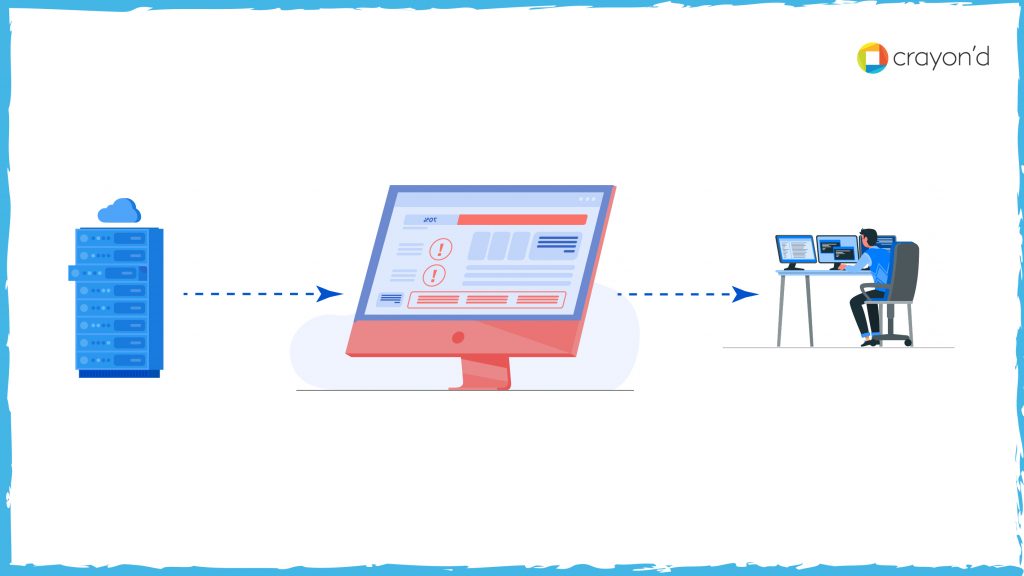
For the back-end
The back-end, or the business-facing side of your product contains all the functions, logic, and actual programming gears. It takes in the user’s requests and provides a response.
The back-end is also responsible for databases, content creation and updating, and much more.
Some of the popular back-end technologies are Python, MongoDB, PostgreSQL, Redis, etc.
Tech stacks at popular companies
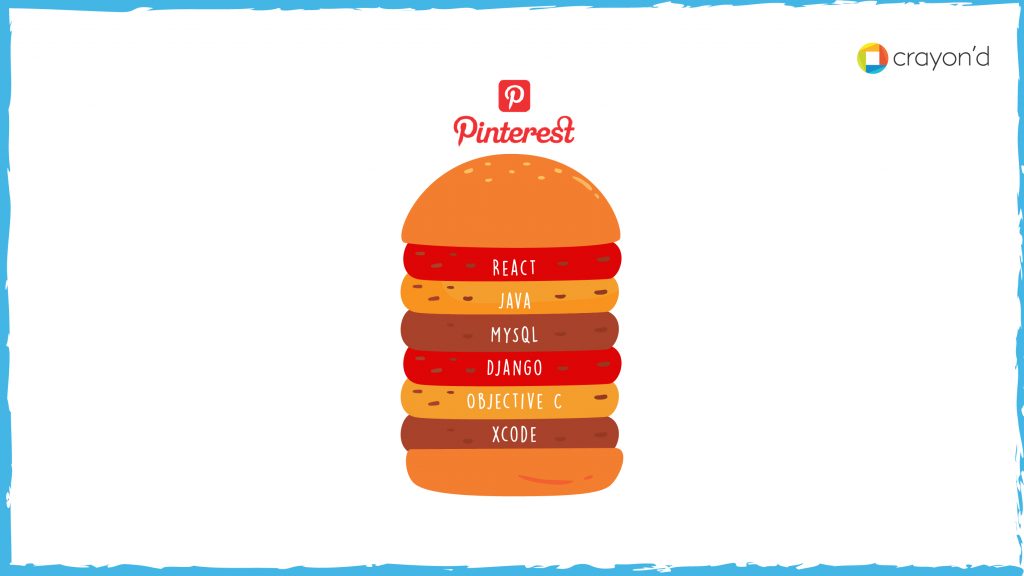
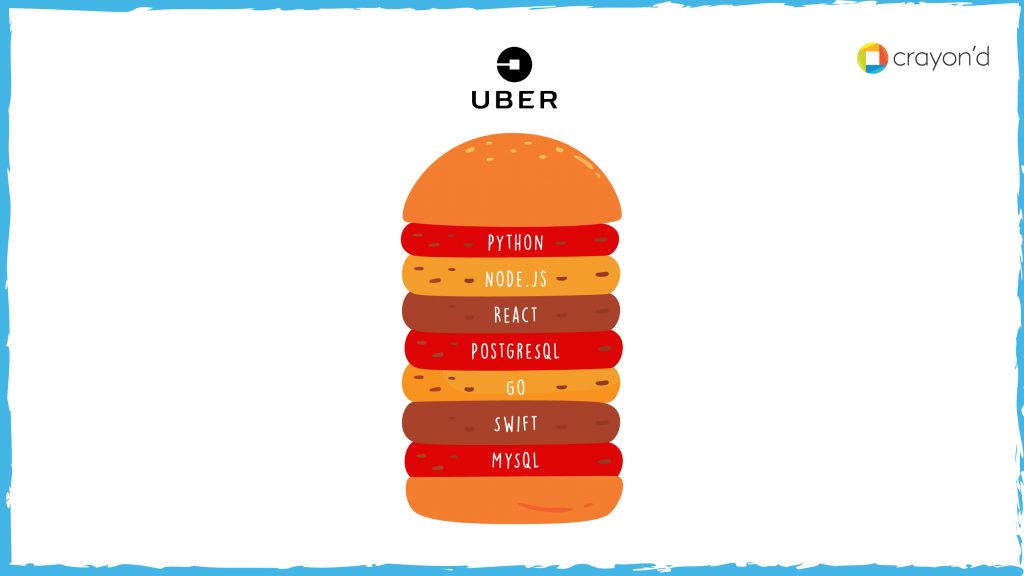


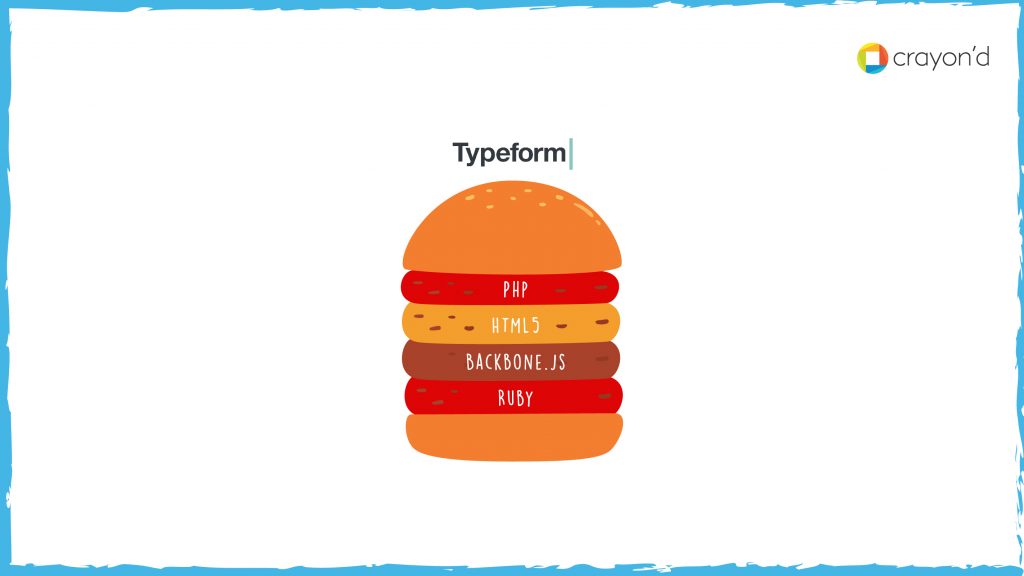
End-to-end SaaS product development using a single tech stack
MEAN technology stack
MongoDB, Express.js, AngularJS, and Node.js come together in this tech stack to provide a single-language programming (Javascript) experience.
Using just JS all around, it lets you reuse code around the parts of the product, decreasing repeated coding. MEAN can deploy cloud-based web applications with ease.
It scales quite well, and being open-source, it has a lot of community support and resources.
An alternative to this is the MERN technology stack, with React replacing AngularJS to provide high-end interactive UIs and seamless changes.
LAMP technology stack
Linux, Apache, MySQL, and PHP come together in this tech stack to provide content management and dynamic web pages.
It is a classic, used by several veterans of the Internet, including WordPress and Drupal. LAMP can deploy web applications quite well, and swapping PHP with Python can result in more dynamism, if required.
It is open-source and has tons of modules and libraries to choose and code from.
Python-Django technology stack
Here, Python acts as the foundation for the Apache web server and MySQL database.
As a framework, Django has a significantly faster development process as it comes with prebuilt modules such as Object-relational mapping layer and SQL injection protection.
This tech stack is generally used for deploying web applications within a short timeline.
Key to Django’s programming principles is ‘Don’t Repeat Yourself’ (DRY) wherein it allows you to reuse code that has been already written in other places within the program.
.NET technology stack
Developed by Microsoft, it has been a longstanding tool used for building dynamic web applications. It is based on C# and is highly compatible with other open-source technologies such as ASP.NET and HTML5 for rapid web development.
As a framework, it is cross-platform and supports all mobile devices, including iOS and Android through its Xamarin implementation.
For those who want to use open source for their solutions, you should know that .NET Core is open-source on GitHub.
Ruby on Rails technology stack
Growing in popularity day by day, Ruby on Rails has a simplified development process. The back-end is written in Ruby, a clean-syntax programming language.
The framework can then be used along with HTML, JavaScript, and CSS for the front-end. Database management can be done using Ruby’s in-built solutions and ActiveRecord.
Actively used for Rapid Application Development since it works well with Agile practices and allows the simplification of common repetitive tasks.
Tools used along Ruby on Rails are:
- Node.js
- Redis
- MongoDB
- JVM
- jQuery
- CoffeeScript
- Bootstrap
- HTML
- CSS
- JavaScript
Tech stacks and their importance in product development
The right tech stack’s benefits permeates through your entire vision for your organization and makes your goals much more achievable. This is because:
- The right tech stack makes your product robust on the whole.
- Developers don’t waste time to figure out solutions or work on patches due to a mismatched tech stack.
- Your product becomes easily maintainable, as badly setup tech stacks lead to later rectifications and a drain in resources.
Scalability and technology stacks
The tech stack obviously influences your product’s ability to scale. Every entrepreneur that undertakes transforming their idea into a product wants it to reach an abundance of customers.
To make that happen, the whole tech stack must be decided upon before beginning development. Having a few gaps and building using workarounds usually comes back to bite you, usually in the form of major bugs or restructuring that costs a lot of time and money.
Get to allocating your resources effectively by spending some initial time on the right tech stack instead.
Choosing the wrong tech stack
What could possibly happen if you end up choosing the wrong tech stack for your product?
Best case scenario, it is a huge bill. Changing to a new tech stack is expensive, as you would have to spend your time on building the same components that exist on the previous stack.
That might not be too bad for a startup or a SaaS company that has big pockets backing it up.
For bootstrapped companies and aspiring entrepreneurs, the story might turn out to be a little different.
Modern users do not have patience for badly-crafted apps, and if yours turns out to be so, then you might not get a second chance to prove yourself right.
SaaS companies cannot thrive without quality products
Aspiring entrepreneurs and new startups enter the market every year, making it harder for mediocre or average products to stand out.
This effect is then compounded by the emergence of new technologies and solutions that might or might not be a game changer. With so much competition and uncertainty, SaaS companies need to safeguard their bets.
The right tech stack makes you futureproof. A company grows only when it has a stream of constant user data, and in-house applications built to harness those can help you shape your SaaS product into something that caters to the user’s evolving needs.
Stagnancy and second-thinking are relics of the past. What a SaaS company needs to be, is ever-moving and scalable.
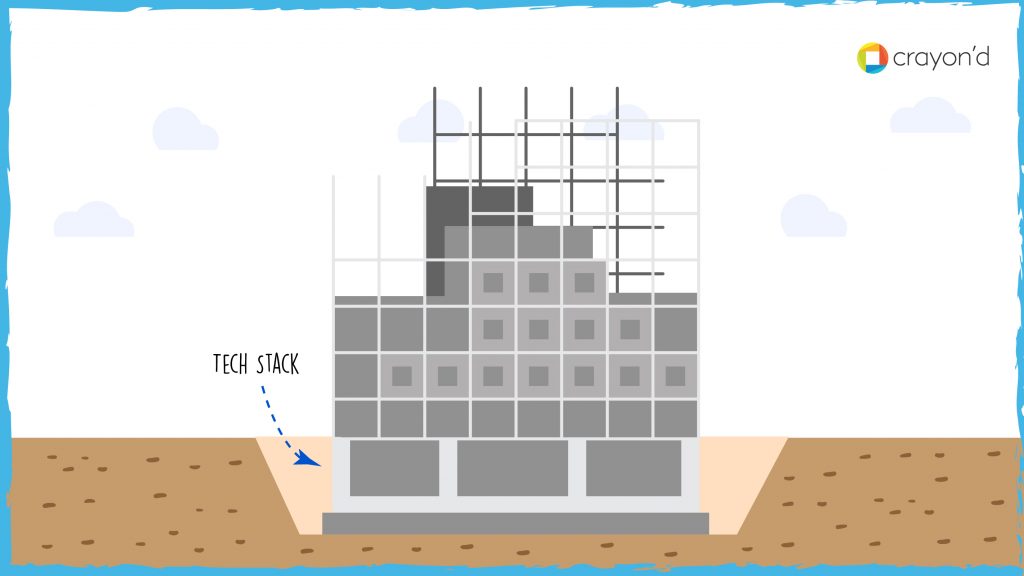
Choosing the right technology stack for your SaaS startup
There is a lot to consider and understand before you finalize a technology stack for your company. Here are some key factors to keep in mind.
Match the tech stack with your product’s requirements
What you build would determine what goes under the hood.
The technology stack used for a social media platform is not the same for a blog or a product portfolio.
If it is a web app, then you would need something like Ruby on Rails. If you want a faster development cycle, you would go for Python-Django.
The scale of your business dictates the technology stack
Product requirements aside, the deadlines and the overall vision also pull their weight in this decision. For small projects that are less than a quarter old, you would not need anything more than a CMS and some other tools.
On the other hand, bigger projects need deeper tools, and you would employ a combination of languages such as Java, C, Go, and whatnot.
Security concerns
Different tech stacks have different levels of encryption. While it boils down to the skilful implementation by the developers, a mismatch between two tools in a stack can cause troubles or open up loopholes.
Working out the nuances and understanding how the overall stack adds up to make your product secure is a worthwhile exercise.
An agile technology stack gives a competitive edge
Product development is surely a long, toilsome process. That’s a given at any startup.
If your tech stack can have tools that can make the developer’s fingers faster and make the overall assembly line agile, then you should definitely look into that.
Why? The faster you enter the market, the longer you get to attract customers before your competitors catch up to you. Would you not like that?
Choose a technology stack that offers long-term support
Trending technologies must seem to be very attractive, with their catchphrases and promises to improve performance and much more.
Stability is more attractive than novelty: new technologies come and go all the time, and including one in your product can be an unsafe bet.
Instead, go for something that is known to support users for a long time and has a community around it.
Technical (community) support is important. Online documentation helps you implement the technology in no time, and forums let you brush up on the best practices. Also, programming languages with a large community generally have a large preset of modules and written functions that are open-source.
This anchors your product properly, allowing you to build upgrades and better functionality with a steady mind, since you know that the technology you have chosen is here to stay.
The cost of the technology stack
If you are a bootstrapped startup that is new to the industry, you would not want to pay a lot for tools. Matching languages with open-source, free platforms is a necessary exercise for such situations.
Even if you are funded, choosing something that is free and has community support can be more beneficial in the long-run. Paid tools have their own business goals to accomplish and might hamper you later, with increased bills or decreased features.
Getting talent to work for you
Choosing a technology stack that is popular among developers is also a concern. A niche or an unpopular stack might be hard to hire for, depending on the number of developers willing to work for it, or their payscale.
A tech stack that is well known in the industry makes it easier to onboard new talent as well, who do not need to spend too much time learning and can just start working.
Bottom-line
A well-matched tech stack helps startups gain a competitive edge.
With everyone’s hands busy with building an MVP and getting it to the market, having the right tools in place speed the entire process up and enable the developers to build something that works without any hassles.
This blog arms you with enough insights for the right decision, and with so much at stack with a fledgling SaaS product, you are bound to be careful.
Even if you forget everything, remember that you would want your technology stack to be scalable, futureproof, and extensive.
Also, if you need some hands-on guidance with your product decisions, you can surely reach out to us. After all, that is what digital product agencies are known for.







Add comment